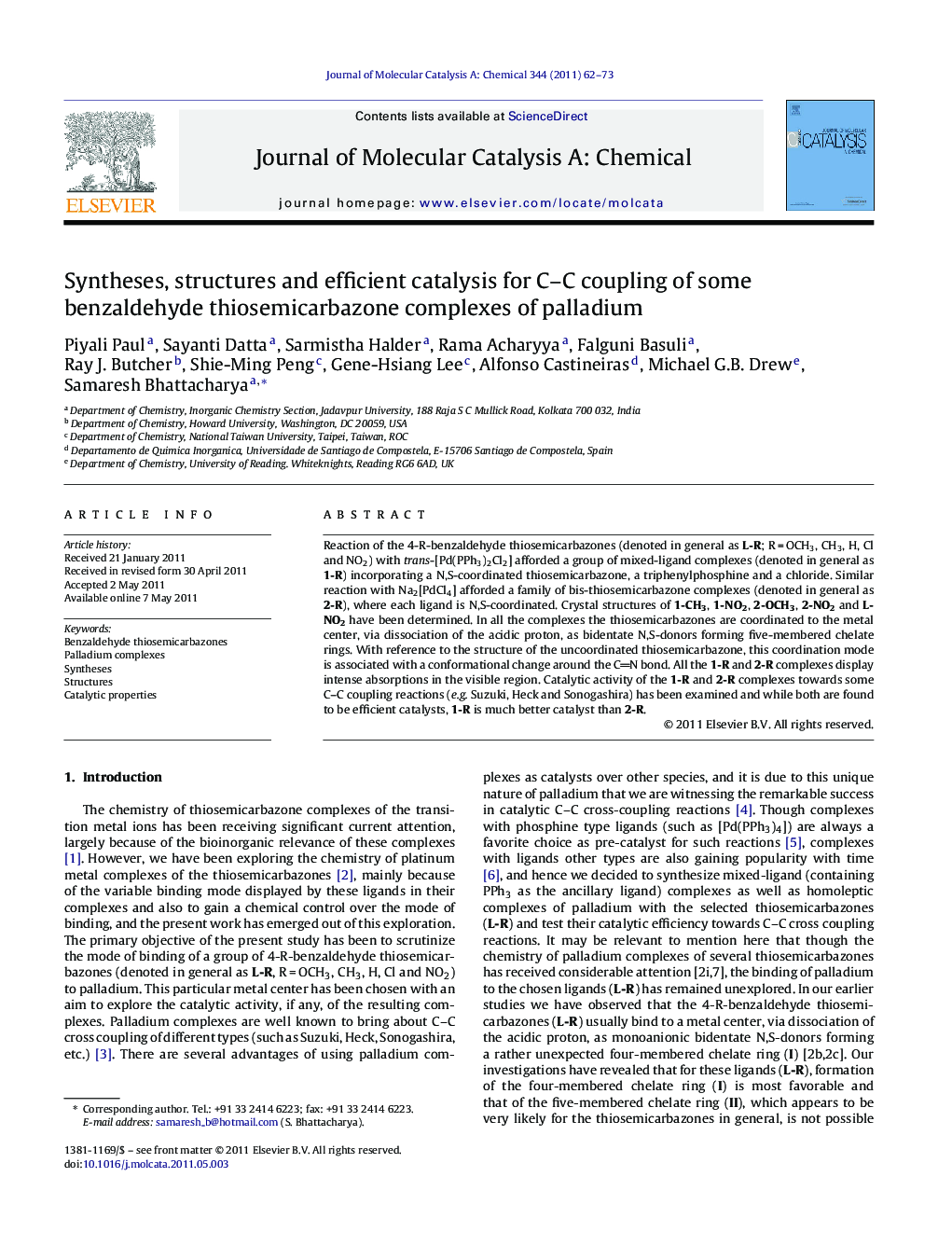| کد مقاله | کد نشریه | سال انتشار | مقاله انگلیسی | نسخه تمام متن |
|---|---|---|---|---|
| 66367 | 48428 | 2011 | 12 صفحه PDF | دانلود رایگان |

Reaction of the 4-R-benzaldehyde thiosemicarbazones (denoted in general as L-R; R = OCH3, CH3, H, Cl and NO2) with trans-[Pd(PPh3)2Cl2] afforded a group of mixed-ligand complexes (denoted in general as 1-R) incorporating a N,S-coordinated thiosemicarbazone, a triphenylphosphine and a chloride. Similar reaction with Na2[PdCl4] afforded a family of bis-thiosemicarbazone complexes (denoted in general as 2-R), where each ligand is N,S-coordinated. Crystal structures of 1-CH3, 1-NO2, 2-OCH3, 2-NO2 and L-NO2 have been determined. In all the complexes the thiosemicarbazones are coordinated to the metal center, via dissociation of the acidic proton, as bidentate N,S-donors forming five-membered chelate rings. With reference to the structure of the uncoordinated thiosemicarbazone, this coordination mode is associated with a conformational change around the CN bond. All the 1-R and 2-R complexes display intense absorptions in the visible region. Catalytic activity of the 1-R and 2-R complexes towards some C–C coupling reactions (e.g. Suzuki, Heck and Sonogashira) has been examined and while both are found to be efficient catalysts, 1-R is much better catalyst than 2-R.
Reaction of the 4-R-benzaldehyde thiosemicarbazones (L-R) with trans-[Pd(PPh3)2Cl2] and Na2[PdCl4] afforded the 1-R and 2-R complexes, respectively, which have shown remarkable efficiency as catalyst for C–C coupling reactions.Figure optionsDownload high-quality image (111 K)Download as PowerPoint slideHighlights
► Reaction of 4-R-benzaldehyde thiosemicarbazones with [Pd(PPh3)2Cl2] afford complexes (1-R) containing a thiosemicarbazone, a PPh3 and a chloride.
► Similar reaction with Na2[PdCl4] afford bis-thiosemicarbazone complexes (2-R).
► Coordination to Pd is associated with a conformational change around the CN bond.
► Both 1-R and 2-R complexes can efficiently catalyze C–C coupling reactions.
Journal: Journal of Molecular Catalysis A: Chemical - Volume 344, Issues 1–2, 17 June 2011, Pages 62–73